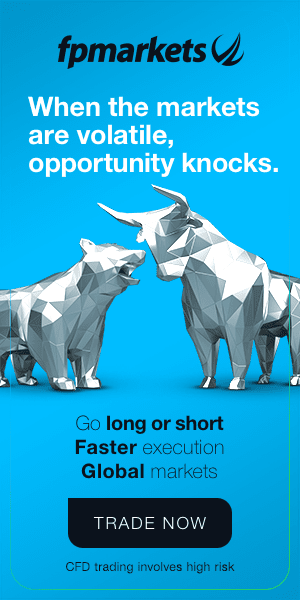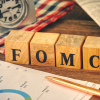OPENING CALL: The Australian share market is expected to open lower. The SPI Futures is expected to be down 5 points.
The Canadian economy rebounded in the second quarter with its best performance in two years, as one of the strongest export showings this decade offset a decline in business investment and softness in household spending.
Tesla raised its prices in China ahead of new tariffs on imported U.S. cars, increasing the pressure on the electric-vehicle maker to fast-track production at its new Shanghai plant.
Overnight Summary
Each Market in Focus
A solid session for Australian shares returns the benchmark index to green for the week, overcoming Monday’s heavy selling as worries about U.S.-China trade relations and global growth slowly ease. Still, the S&P/ASX 200 logs its first monthly fall since December and the sharpest since November.
Underpinned by broad gains, the index ends at 6604.2, up 1.5% today and 1.2% over the week but still 3.1% weaker in August. Gains of 2.1% for both Commonwealth Bank and Westpac help drive the heavily weighted banking sector, while big miners BHP and Rio Tinto adds 2.2% each and Fortescue Metals lifts 4.2%.
Stocks snapped a four-week losing streak to end August just a few percentage points below their all-time high.
The month was capped by Friday’s quiet session during which the S&P 500 edged up less than 0.1%. That marked a stark contrast to much of August, which was by many measures the most tumultuous period yet for markets in 2019.
Investors grappled with a lack of clarity on core issues like trade and global growth and remain wary heading into what has historically been a shaky month for the stock market.
Fears about escalating U.S.-China trade tensions sent the broad stock-market index down at least 2.5% on three occasions in August, the most in nearly eight years. Gold prices surged as investors sought a refuge from the selling, and the yield on the 10-year U.S.
Treasury note surpassed that of the two-year for the first time since 2007-the starkest sign yet that bond investors fear a recession is on the horizon.
Not all parts of the market suffered. Consumer-driven companies stood out, with Target Corp. jumping 24% to notch its best month since 2000, Sharpie maker Newell Brands Inc.
rising 17% and home-improvement retailer Lowe’s Cos. adding 11%. And the stock market bounced back in the final week of August, with the S&P 500 managing to pare its loss for the month to 1.8%.
The index is still up 17% for the year and within just 3.3% of July’s record close, ending Friday’s session at 2926.46.
Nickel prices soared after the Indonesian government said it would ban exports of nickel ore earlier than traders had expected, sparking concerns of shortages in the stainless-steel ingredient.
Refined nickel futures jumped 8.8% to $17,905 a metric ton on the London Metal Exchange, after multiple media reports that Energy and Mineral Resources Minister Ignasius Jonan said ore exports would be banned from the end of December this year. While most industrial-metal markets have come under pressure from the U.S.-China trade conflict and global manufacturing slowdown, nickel prices have now surged 68% in 2019 and reached their highest level in almost five years.
December gold settled at $1,529.40 an ounce on Friday, after hitting a more-than-six-year high earlier this week. Month to date, it has climbed by more than 6% and trades about 17% higher so far this year. Silver, by comparison, saw its December contract finish Friday at a more than two-year high of $18.342 an ounce. It’s up around 11% month to date, with its yearly gain at roughly 18%.
Oil futures settled sharply lower, contributing to a loss for the month, after reports emerged that Russian Energy Minister Alexander Novak said Russia’s oil output cuts in August will be slightly smaller those agreed to under the deal between OPEC and non-OPEC producers.
Novak said the countries under the deal will discuss the agreement and the market situation at the Monitoring Committee meeting on Sept. 12, Reuters reported, citing RIA and Interfax news agencies. The reports quoted Novak as saying Moscow still aims to fully comply with the deal.
OPEC oil output rose in August for the first month this year, with members of the group pumping 29.61 million barrels a day, up 80,000 barrels a day from July’s revised figure, according to the results of a Reuters survey reported Friday.
Earlier this week, OPEC’s Joint Ministerial Monitoring Committee, which monitors OPEC and non-OPEC member compliance with the cuts, pegged overall conformity at 159% in July, up 22% from June. OPEC and other major oil producers, including Russia, pledged to cut supplies at the start of this year by a total of 1.2 million barrels a day from late 2018 levels. The deal was extended through March 2020.
West Texas Intermediate crude for the October delivery fell $1.61, or 2.8%, to settle at $55.10 a barrel on the New York Mercantile Exchange. It’s been a tough August for crude, with the commodity slipping into a bear market. Front-month prices for the U.S. benchmark suffered a 5.9% monthly decline, according to Dow Jones Market Data.
Still, the front-month WTI contract saw a 1.7% weekly rise after a large fall in the U.S. inventories and some cautious optimism on trade.
Also, data Friday from Baker Hughes implied a slowdown in U.S. oil-drilling activity, with the number of active oil rigs down 12 to 742 this week. That followed last week’s drop of 16 oil rigs.
Global benchmark October Brent crude, which expired at the end of the session, ended at $60.43, down 65 cents, or 1.1%, on ICE Futures Europe. The contract saw a weekly rise of 1.8% and a monthly decline of 7.3%. November Brent crude, which became the front-month at the settlement, lost $1.24, or 2.1%, to settle at $59.25 a barrel.
The euro fell to a new two-year low as some investors bet that lackluster economic data would force the European Central Bank to further ease monetary policy next month.
The common currency was recently down 0.6% at $1.0991, after hitting its lowest level since May 2017 earlier in the session. The ICE Dollar Index was up 0.3% to 98.80, paring earlier gains that had put it at a 27-month high.
Investors have become increasingly unsettled over how an escalating trade conflict between the U.S. and China would hit economies such as the eurozone, where growth has all but ground to a halt despite historic central bank stimulus.
Many now believe the ECB could unveil a big stimulus package at the Sept. 12 monetary policy meeting. Christine Lagarde, who will take over as the central bank’s president in November, wrote earlier this week that “monetary policy needs to remain highly accommodative for the foreseeable future” to combat slowing growth.
“Investors have started to listen closely to what she is saying,” said Zach Pandl, head of foreign exchange research at Goldman Sachs. Ms. Lagarde “may have clarified that there is indeed scope for the ECB to keep cutting.”
European sharemarkets lifted on Friday after China and the US indicated willingness to proceed on trade talks. Commoditydependent stocks rose 2.5% and auto stocks rose 1%. The pan-European STOXX600 index rose by 0.7%, the German Dax lifted 0.9% and the UK FTSE rose by 0.3%. In London trade, shares of Rio Tinto rose by 2.6% and BHP rose by 2.5%.
Hong Kong’s Hang Seng Index edged up 0.1% following the cancelation of a weekend demonstration, but remained on pace for one of its biggest monthly drops in years, down 7% in August. Hong Kong stocks have been weighed by intensifying protests that have hurt the local economy and prompted concerns about a recession. In comparison, benchmark stock indexes in mainland China, South Korea and Japan are down 1-4% in August.
Japan’s Nikkei 225 rose 1.2% and South Korea’s Kospi climbed 1.8%. The Shanghai Composite edged down 0.2% and stocks in Shenzhen slipped 0.7%.
Indian shares close broadly higher, recovering from two consecutive days of declines.
India’s fiscal 1Q GDP report is due this evening and investors will likely look for more stimulus steps if the data miss already weak expectations. The BSE Sensex closes 0.7% higher at 37332.79, led by gains in financial and commodities stocks.
Malaysian stocks closed at their highest level in three weeks, thanks to a late-session rally. Market breadth was positive, with gainers beating losers 517 to 322. The Kuala Lumpur Composite Index climbed 1.1% to 1612.14, its highest close since Aug. 9.
Singapore shares close higher as investors tracked a rally in Wall Street stocks. The FTSE Straits Times Index closes 0.8% higher at 3106.52. Index heavyweight DBS Group gains 1.2%, while peers United Overseas Bank and Oversea-Chinese Banking Corp are 0.7% and 0.8% higher, respectively.







 Access +10,000 financial
instruments
Access +10,000 financial
instruments

